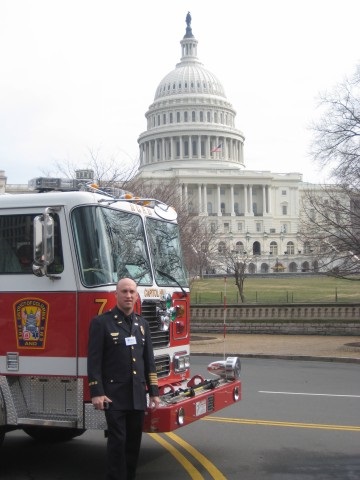 Last May, Shane Ray was elected president of the National Fire Sprinkler Association (NFSA). In an interview with Tom Weber, national director of ISO Community Hazard Mitigation, Ray talks about his leadership style, his plans for the NFSA, and the challenges ahead for the organization.
Last May, Shane Ray was elected president of the National Fire Sprinkler Association (NFSA). In an interview with Tom Weber, national director of ISO Community Hazard Mitigation, Ray talks about his leadership style, his plans for the NFSA, and the challenges ahead for the organization.
CFPN: Congratulations on your election as the NFSA’s new president. Do you have immediate plans for the organization?
Ray: Thank you. I’m honored to serve the NFSA in any capacity. I’m pleased to announce that the NFSA has completed its transition management plan. It was a four-part process with the purpose of transitioning leadership within the NFSA and improving operational efficiencies and effectiveness. Next, we will begin the strategic planning process. The intent is to strategically realign the NFSA to serve its members better. We will strive to achieve our vision, fulfill our mission, and do it all while adhering to our values system.
CFPN: It sounds like a very exciting period for the organization.
Ray: The transition-management period had moments of celebration, yet at the same time, many tough decisions had to be made. I cannot adequately express my appreciation to the employees who have worked through the transition and to the members who have been understanding and supportive. It has also been great to have many supportive organizations as friends, ISO among them.
CFPN: What leadership qualities do you value and hope to emulate?
Ray: Good leaders must be able to communicate effectively. I use a daily devotional by John Maxwell entitled A Leader’s Heart. On the day I gave my acceptance speech at the North American Fire Sprinkler Expo last May, the headline focused on the point that, to communicate, we must listen. The question for the day was, “How well do you listen to others?” That resonated with me, and I made a pledge to listen and be responsive to my members and to value their input and insights. I also think it is important to work hand-in-hand with our leadership team and partnering organizations.
CFPN: What challenges do you face in achieving the NFSA’s mission?
Ray: Our vision is to protect lives and property by securing widespread acceptance of the fire sprinkler concept. We face the initial challenge of getting the public to acknowledge that fire sprinklers are a solution to a problem — fire — that most believe won’t happen to them.
One major hurdle we have to overcome in this country is the adoption of laws that prevent state and local government from requiring fire sprinklers in one- and two-family dwellings. Many states have enacted legislation banning fire sprinklers from being mandatory at the local level, with other states creating additional hurdles. We cannot let special interest groups and the uninformed cherry-pick the code. We must make it our mission to share the information, facts, and statistics with decision makers so they can make the best choices. It’s too bad more decision makers couldn’t see the burn demonstration we gave during the Expo in Orlando. At the demo, flashover was reached in a nonsprinklered room in 2 minutes 24 seconds. In the room with fire sprinklers, the system activated in 27 seconds to extinguish the fire. It was a very powerful demonstration.
CFPN: What are some big initiatives coming up for the NFSA?
Ray: First and foremost, it’s our duty to lead progressively with the vision of fire sprinkler systems that are properly designed, installed, inspected, and maintained — from homes to high-rises. The NFSA will be promoting residential fire sprinkler initiatives as well as retrofit initiatives. We’ll be working hard to support fire chiefs, fire marshals, and local and state officials who want to improve fire and life safety and limit property loss. We’ll also be pushing for the Fire Sprinkler Incentive Act. Members of our board of directors, councils, and committees will be attending meetings with our fire service partners and allies on Capitol Hill this November to promote the act. We’re urging our members to join us. I can’t stress how important this legislation is in terms of providing an incentive for consumers to purchase fire sprinklers. It’s time we got the legislation passed.
CFPN: What can the fire service do about expanding the message regarding fire sprinklers?
Ray: We all have to challenge ourselves — the fire service, insurance companies, and the community at large — to engage in the process. For firefighters, I’d say make sure you have a fire safety education plan for your department and the community. The educational programs you provide will go from the individual, extend to family and friends, and lead to proactive service in the community. The next step is educating our elected officials.
We need to lead by example. That means we have to live the fire sprinkler message. I encourage everyone to make sure their house has fire sprinklers. Every firehouse should have sprinklers as well. I live the message that fire sprinklers equal greater safety. Do you?
In addition to leading ISO Community Hazard Mitigation, Tom Weber is a 35-year fire service veteran and retired fire chief. Chief Weber works closely with fire chiefs throughout the country as their ISO liaison.
